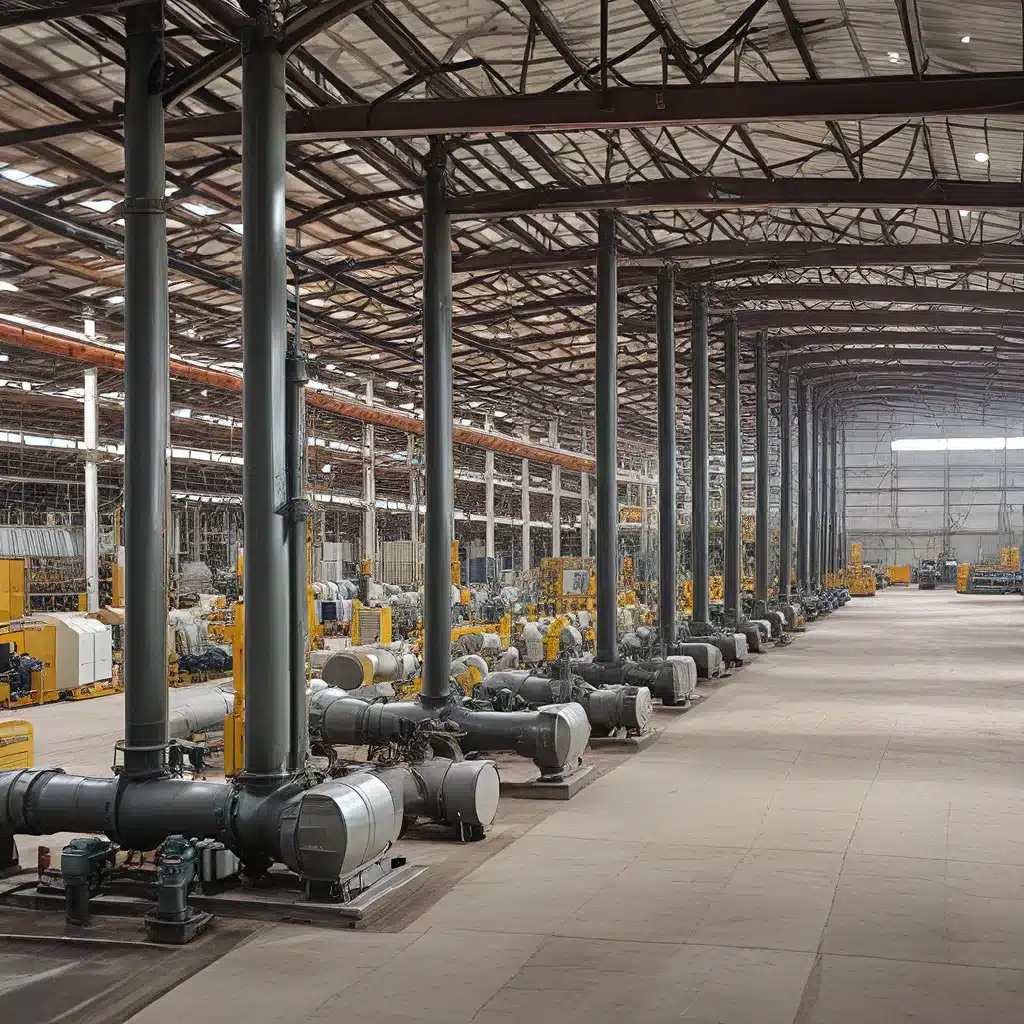
Unlocking the Power of Energy Efficiency: Strategies for Industrial Facilities
As the world grapples with the pressing issue of climate change, the need for sustainable and efficient energy solutions has never been more crucial. In the industrial sector, where energy consumption can account for a significant portion of operational costs, optimizing energy efficiency is not merely a matter of environmental responsibility – it’s a strategic imperative that can drive cost savings, enhance competitiveness, and reduce the industry’s carbon footprint.
The National Renewable Energy Laboratory (NREL) reports that industrial facilities can typically achieve 15-25% energy savings through the implementation of energy efficiency measures. These strategies encompass a wide range of interventions, from upgrading equipment and optimizing processes to leveraging smart technologies and fostering a culture of energy-conscious behavior.
Auditing and Identifying Opportunities
The first step in improving energy efficiency in industrial facilities is to conduct a comprehensive energy audit. This process involves a thorough assessment of the facility’s energy consumption patterns, identifying areas of high energy use and potential waste.
The U.S. Department of Energy’s Advanced Manufacturing Office recommends that these audits be carried out by qualified professionals, who can utilize specialized metering equipment and data analysis techniques to pinpoint opportunities for optimization.
One such technique is benchmarking, where the facility’s energy performance is compared to industry best practices or peer facilities. This can help identify areas where the operation falls short and highlight potential efficiency improvements.
Upgrading Equipment and Systems
Once the energy audit has identified the key areas for improvement, the next step is to upgrade the facility’s equipment and systems to enhance energy efficiency.
This may involve replacing older, less efficient equipment with newer, more energy-efficient models, such as high-efficiency motors, variable-frequency drives, or advanced HVAC systems. The U.S. Department of Energy’s Advanced Manufacturing Office estimates that upgrading to energy-efficient motors alone can reduce energy consumption by up to 50%.
In addition to equipment upgrades, optimizing the integration and operation of various systems can yield significant energy savings. For example, coordinating the HVAC, lighting, and production equipment can minimize the simultaneous use of energy-intensive systems, leading to reduced overall consumption.
Leveraging Smart Technologies
The digital revolution has ushered in a new era of smart technologies that can dramatically enhance energy efficiency in industrial facilities. Sensors, data analytics, and automation solutions can provide real-time insights into energy use and enable the optimization of processes and equipment.
McKinsey & Company’s research suggests that the industrial sector can achieve up to 30% energy savings through the deployment of digital technologies, such as building management systems, predictive maintenance, and advanced process control.
Moreover, renewable energy integration, energy storage, and microgrids are emerging technologies that can further improve the energy resilience and sustainability of industrial facilities.
Fostering a Culture of Energy Efficiency
While technological and operational improvements are essential, cultivating a culture of energy efficiency within the organization can amplify the impact of these efforts.
This involves educating and empowering employees at all levels to become active participants in energy-saving initiatives. Simple behavioral changes, such as turning off lights and equipment when not in use, can lead to significant energy and cost savings.
The U.S. Environmental Protection Agency highlights the importance of employee engagement, training, and incentive programs in fostering a sustainable energy culture within industrial facilities.
Collaboration and Continuous Improvement
Improving energy efficiency in industrial facilities is an ongoing process that requires a commitment to continuous improvement. Collaboration with industry peers, research institutions, and energy experts can provide valuable insights and best practices to further optimize energy use.
Firewinder, for instance, offers comprehensive energy efficiency solutions for industrial clients, including energy audits, equipment upgrades, and smart technology integration.
By embracing a holistic approach to energy efficiency, industrial facilities can unlock significant cost savings, enhance their competitiveness, and contribute to the broader goal of environmental sustainability.
The Road Ahead: Continuous Innovation and Adaptation
As the industrial landscape continues to evolve, the pursuit of energy efficiency will remain a critical priority. Emerging technologies, policy changes, and shifting market demands will require industrial facilities to stay at the forefront of innovation and adaptation.
Ongoing research and development in areas such as renewable energy, energy storage, and advanced manufacturing processes hold the potential to further revolutionize the way industrial facilities manage their energy consumption.
By embracing a culture of continuous improvement, collaboration, and strategic investment, industrial facilities can position themselves as leaders in the transition to a more sustainable and energy-efficient future.

